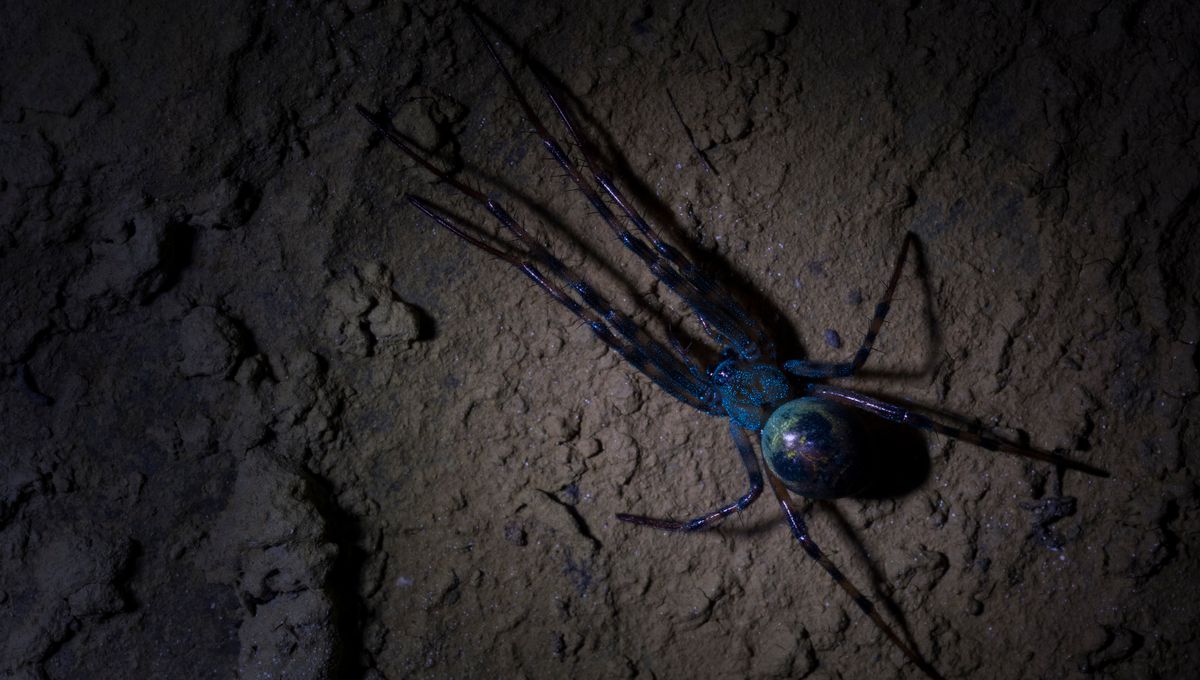
Mine spiders have seen a surge in popularity recently as many are realizing for the first time that some of the planet’s most impressive arachnids live their whole lives in dark and remote places. While there isn’t just one genus of cave-dwelling arachnids, there’s a host of impressive spiders to be found in caves and mines – and they surely only become more appealing when humans abandon them.
Perhaps the most impressive mine spider is a species that was first identified a few years ago in an abandoned mine in Baja California Sur, Mexico. In suitably spooky fashion, its existence was first hinted at by the discovery of a hollow husk.
Mine spiders: finding a monster
“The first evidence we found of this species was a shed exoskeleton in the cracks of a rock overhang,” said Jim Berrian, field entomologist at the San Diego Natural History Museum and one of the authors describing the species in a statement from 2017.
“The exoskeleton was abnormally big and I could tell by the eye pattern that it was in a group of spiders, wandering spiders from the Family Ctenidae, with very few species in Baja California Sur,” Berrian added.
The behemoth of mine spiders wasn’t just a new species, but also a new genus. It was named the Sierra Cacachilas wandering spider, Califorctenus cacachilensis, and is a relative of the notoriously venomous Brazilian wandering spider, Phoneutria fera.
Fortunately for Berrian, it doesn’t seem the Sierra Cacachilas inherited the same toxicity.
“I got bit while handling a live specimen of Califorctenus cacachilensis and I’m still alive,” he continued. “We haven’t analyzed the toxicity of the venom, but most wandering spiders are not as dangerous as the Brazilian wandering spider.”
The mother of all mine spiders
What it lacks in venom strength, it makes up for in size. With a spindly leg span of around 10 centimeters (4 inches) across and a short, stocky 2.5-centimeter (1-inch) body, its splayed size is about that of a softball. It’s a body plan that makes web-spinning pointless; far better to scuttle along the walls of abandoned mines and hunt for your prey on foot. Their venom might not be strong enough to have taken out Berrian, but it would make short work of anything rat-sized or smaller.
Its discovery wasn’t all that surprising in respect of the fact that it’s estimated there to be around 2 to 5 million insects and spiders left to discover, but it is a little strange it hadn’t been identified earlier. The abandoned mine that was found wasn’t always abandoned, meaning it’s highly likely that miners were once living in close quarters with these giants.
Are there other mine spiders?
When it comes to spiders that love living in long, winding caves and mines, it should come as no surprise that the cave orb-weavers (Meta menardi) are big fans. From the family Araneidae, they opt for Lord Of The Rings’ Shelob’s approach to hunting by using silk to catch prey.
It’s not always sticky, however, as in the case of Meta menardi which uses its webs more like tripwires to alert them of passing millipedes, slugs, and flies.
According to the British Arachnological Society, it’s a common resident in the entrance zones of caves and mines in the UK. They’re a far throw from the beastly size of C. cacachilsensis, but still highly efficient hunters.
Other spiders have taken living in dark and remote places to such an extreme, they’ve evolved out of using certain light-sensing organs. Earlier this year, seven new troglobitic species of spider in the genus Tegenaria were discovered in the caves of Israel.
Of the seven new species that were found, five of them had reduced eyes, while the other two species were completely blind. Something to bear in mind if you go for a casual cave walk: you merely adopted the dark, these arachnids were born in it.
If the prospect of mine spiders has you feeling a little itchy, the simple solution of leaving these habitats alone should be enough to keep a comfortable distance. Lord knows New Zealand’s biggest spider wishes humans would keep out of the Crazy Paving Cave so they could hang their baby balls in peace.
An earlier version of this article was published in July 2023.
Source Link: Mine Spiders Bigger Than A Burger Patty Lurk Deep In Abandoned Caves